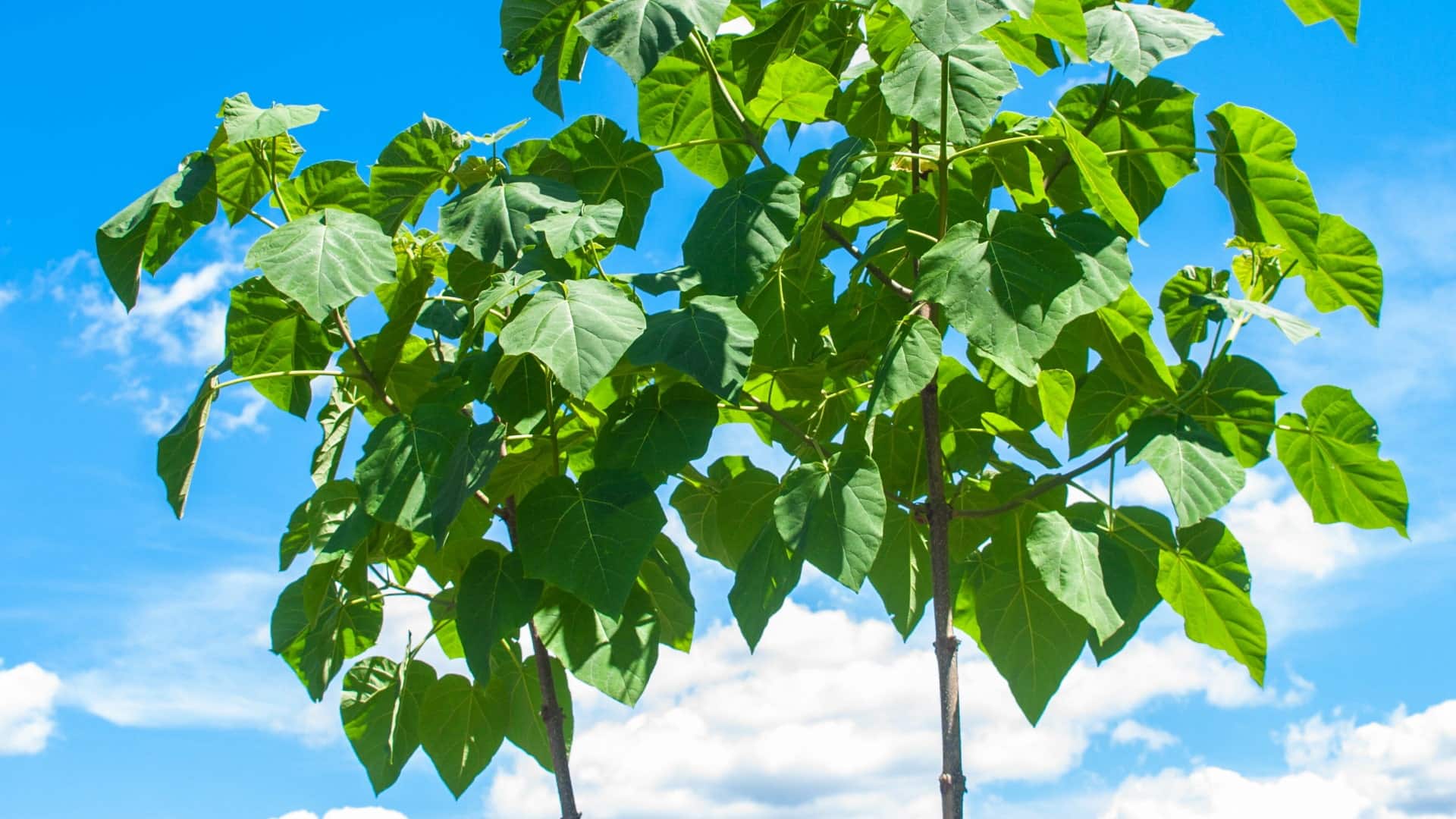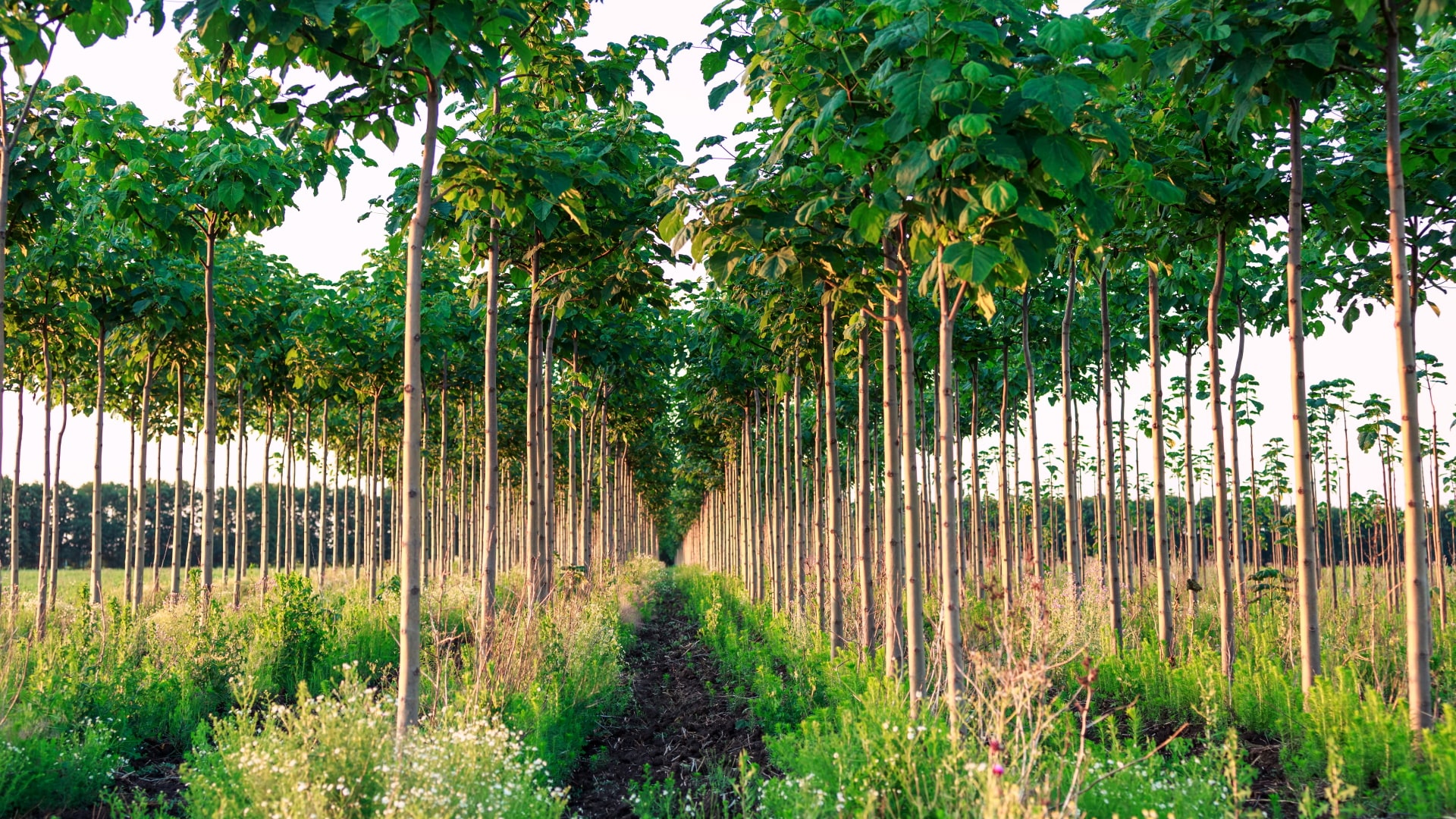Paulownia
Paulowniaceae spp
General info
A hardwood tree genus encompassing 17 species native to China and East Asia. Noted as one of the fastest growing trees in the world, it is unsurprising that its potential as a bioenergy crop is of interest. Wild type species tend to utilise the C4 photosynthetic enzyme cycle being a key element towards their ability to gain biomass quickly, however, many more modern hybrids utilise the C3 enzyme cycle.
Paulownia produces a lightweight but strong timber which has been heavily used by Japanese craftsmen for decades for the construction of furniture and instruments. Its leaves and flowers are also known to be good sources of fat and sugar for fodder, and nitrogen for green manure, suggesting potential roles in agroforestry incorporation strategies.
Cultivation and agronomy
Paulownias require permeable soil with a pH value above 5 (5-8.9) and tend to grow best in temperatures between 15-16 °C though they have a range of tolerance between -25 and 47 °C depending on the species. In a growth review of this species in Europe, different species and hybrids demonstrated highly variable yields and wood qualities. Yields in the second year of cultivation studies ranged from 1.5-14 oven dried tonnes per hectare per year. Despite showing approximately equivalent energy profiles to both willow and poplar (~19 Mj/kg), there is debate over the quality of fuel pellets produced due to the low-density wood, with the resulting potential requirement for processes such as biomass torrefaction to produce better fuel quality.
Paulowniaceae spp are at risk during juvenile growth, due to the very large leaf size and lack of sufficiently woody stems early on. Plantations of these tree species are susceptible to high winds causing mechanical damage if windbreaks and protection are not in place. Paulowniaceae spp have shown comparable short rotation coppice results to willow in certain studies but could also have potential in short rotation forestry. It was noted that over just three growing seasons P. elongata varieties could achieve 92 kg/tree and in plantation strategies using 2000 trees per hectare, 150–300 tonnes/year was produced 5–7 years after planting.
Return to crops overview
Relevant research
Jakubowski, M. (2022). Cultivation Potential and Uses of Paulownia Wood: A Review. Forests, 13(5), 668.
Yadav, N. K., Vaidya, B. N., Henderson, K., Lee, J. F., Stewart, W. M., Dhekney, S. A., & Joshee, N. (2013). A review of Paulownia biotechnology: A short rotation, fast growing multipurpose bioenergy tree. American Journal of Plant Sciences, 4(11), 2070.

